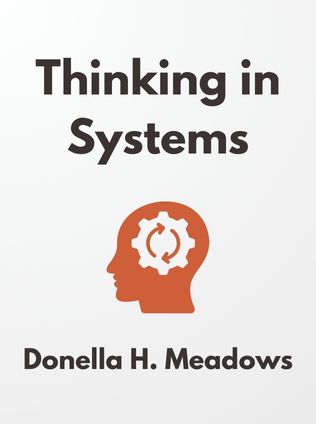
Thinking in Systems
A Primer
By Donella H. Meadows
Published 01/2008
About the Author
Donella H. Meadows was a pioneering environmental scientist, teacher, and writer. She is best known for her work on the groundbreaking book "The Limits to Growth," which was published in 1972 and warned of the potential consequences of unchecked economic and population growth. Meadows was a professor at Dartmouth College and the founder of the Sustainability Institute, which aims to promote sustainable living practices. Her work in systems thinking has had a profound impact on various fields, including environmental science, economics, and public policy. "Thinking in Systems" is one of her most influential works, providing a clear and accessible introduction to systems analysis.
Main Idea
"Thinking in Systems" by Donella H. Meadows offers a comprehensive introduction to the concept of systems thinking. Meadows explains that many aspects of the world operate as complicated systems rather than simple cause-effect relationships. Understanding these systems and how to intervene in them is key to producing meaningful change.
Table of Contents
- Introduction
- What Is a System?
- Stocks and Flows
- Feedback Loops
- Properties of Systems
- Common System Traps
- Leverage Points: Places to Intervene in a System
- Living in a World of Systems
- Conclusion
What Is a System?
A system is composed of three main elements: the individual components (elements), the relationships between these components (interconnections), and the purpose or function of the system. Systems can be found in many aspects of life, from natural ecosystems to human organizations.
"A system is a set of things—people, cells, molecules, or whatever—interconnected in such a way that they produce their own pattern of behavior over time." - Donella H. Meadows
Meadows emphasizes that understanding these components and their interactions is crucial for analyzing how systems work and how to influence them effectively.
Systems
- A football team, which includes players, coaches, support staff, and fans.
- A corporation, where people, machines, and information work together to achieve goals within the larger economic system.
Stocks and Flows
Stocks and flows are fundamental to every system. Stocks represent the elements within a system that can be measured or counted, such as the amount of water in a bathtub. Flows refer to the changes in these stocks over time, such as water flowing into or out of the bathtub.
"A stock is the foundation of any system. Stocks are the elements of the system that you can see, feel, count, or measure at any given time." - Donella H. Meadows
Understanding the dynamics of stocks and flows helps explain how systems change and evolve.
Stocks and Flows
- Water in a bathtub, with inflows from the faucet and outflows through the drain.
- Population, where births and immigration increase the stock, while deaths and emigration decrease it.
Feedback Loops
Feedback loops are mechanisms that influence the behavior of systems over time. There are two main types of feedback loops: balancing (negative) feedback loops and reinforcing (positive) feedback loops.
"A feedback loop is a closed chain of causal connections from a stock, through a set of decisions or rules or physical laws, to a flow, and back to the stock." - Donella H. Meadows
Balancing feedback loops aim to maintain a system at a certain level, while reinforcing feedback loops amplify changes within a system.
Sign up for FREE and get access to 1,400+ books summaries.
You May Also Like
The Subtle Art of Not Giving a F*ck
A Counterintuitive Approach to Living a Good Life
By Mark MansonRich Dad Poor Dad
What the Rich Teach Their Kids About Money - That the Poor and Middle Class Do Not!
By Robert T. KiyosakiHow To Win Friends and Influence People
The All-Time Classic Manual Of People Skills
By Dale CarnegieFreakonomics
A Rogue Economist Explores the Hidden Side of Everything
By Steven D. Levitt and Stephen J. Dubner



















